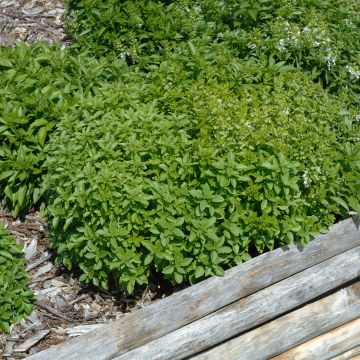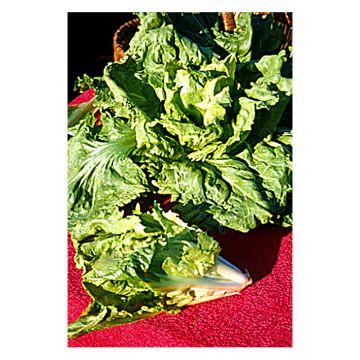

Brassica oleracea Kale Frost Byte F1


Brassica oleracea Kale Frost Byte F1
Brassica oleracea Kale Frost Byte F1
Brassica oleracea Kale Frost Byte F1
Kale
Special offer!
Receive a €20 voucher for any order over €90 (excluding delivery costs, credit notes, and plastic-free options)!
1- Add your favorite plants to your cart.
2- Once you have reached €90, confirm your order (you can even choose the delivery date!).
3- As soon as your order is shipped, you will receive an email containing your voucher code, valid for 3 months (90 days).
Your voucher is unique and can only be used once, for any order with a minimum value of €20, excluding delivery costs.
Can be combined with other current offers, non-divisible and non-refundable.
Home or relay delivery (depending on size and destination)
Schedule delivery date,
and select date in basket
This plant carries a 6 months recovery warranty
More information
We guarantee the quality of our plants for a full growing cycle, and will replace at our expense any plant that fails to recover under normal climatic and planting conditions.
Description
Kale Frost Byte F1 is an attractive and decorative hybrid variety. This kale produces textured and frilly leaves, extensively white in colour, which contrast with those that mature with age, white on the inside, green on the outside. In the kitchen, the leaves are delicious, with a sweet and mild flavour from the lamina to the stalk. With very high nutritional values, kale adds crunch and taste to autumn and winter dishes. To extend the harvest, pick the bottom leaves first. Resistant to cold and heat, it offers a long harvesting period from September to January. Sowing takes place from March to June, followed by transplanting into light soil with constant and rich moisture.
Kale is a vegetable plant native to Europe. Like all cabbages, they belong to the large Brassicaceae family and have the Latin name Brassica oleracea acephala sabellica. The term acephala refers to the fact that they do not form a head or 'heart'.
These cabbages have large fibrous and very curly leaves, ranging in colour from pale green to very dark green, sometimes slightly bluish. They have the particularity of being highly resistant to cold, diseases and even caterpillars. It should be noted that these cabbages are particularly beautiful, especially under a light frost... to the point that some very small varieties are only grown to decorate autumn and winter planters.
The Autumn Kale is a biennial plant grown as an annual that is full of qualities, both in terms of taste and nutrition. With a pronounced flavour, it is mainly consumed cooked, in soups, but also braised or stuffed. It is an excellent winter vegetable.
From a dietary point of view, it is remarkable: it has low energy value, but it is very rich in beta-carotene, vitamins C, K, B2, B6 and B9, and also contains a lot of fibre and minerals such as calcium, manganese and potassium. It also provides, in smaller but significant proportions, copper, iron, magnesium and vitamins E, B1 and B3.
In the vegetable garden, Autumn Kale has the same requirements as other cabbages: deep soil, excellent manure and regular moisture. It thrives in sunny conditions and generally enjoys cool and rainy climates.
NB: This variety is labeled F1 for 'F1 hybrid' because it is a variety resulting from the crossing of carefully selected parents to combine their qualities. This results in a variety that can be particularly flavourful and/or early while being resistant to certain diseases. Sometimes criticised or wrongly associated with GM foods, F1 hybrid seeds are interesting both for their homogeneity and their resistance, but unfortunately, their qualities do not pass on to subsequent generations: it will therefore not be possible to recover the seeds for later sowing.
Harvest: It is harvested leaf by leaf, according to needs. In spring, you can also harvest the floral shoots before they bloom and consume them like broccoli.
Storage: Kale can be kept in the refrigerator for several days. It also freezes very well after being blanched in salted boiling water. Winter varieties can also be left in the ground.
Gardener's tip: Don't forget the flowers! Even though the vegetable garden is primarily a garden for producing quality vegetables, it is always interesting to plant flowers in it. Firstly, and even if the beauty of certain vegetables like Kale is enough on its own, for the aesthetic pleasure they provide, but also to repel pests and attract valuable pollinators. So, don't hesitate to plant, in the middle of the rows or along the edges, Gaillardias, Marigolds, Zinnias, Cosmos, Nasturtiums or even a beautiful aromatic variety like Dill. However, be cautious of certain plants, although very useful like Borage, which tends to reseed abundantly in spaces dedicated to cultivation.
Report an error about the product description
Harvest
Plant habit
Foliage
Botanical data
Brassica
oleracea
Kale Frost Byte F1
Brassicaceae
Kale
Cultivar or hybrid
Annual
Other Curly Kale seeds
View all →Planting and care
Sowing:
The germination temperature of the 'Frost Byte F1' Kale is around 15°C (59°F) (minimum 7° (44.6°F), maximum 20° (68°F)) and takes 10 to 14 days.
Sowing period: from March to June
Harvest period: from September to January
You can either directly sow in place or prepare seedlings that will later be planted in their final position in the garden.
Seedling preparation: In a greenhouse or nursery in the garden for the rest of the year (according to the recommended sowing period), sow the seeds at a depth of 1 to 2 cm (0.5 to 1in) in a good seed compost or fine soil. Cover lightly with compost and remember to keep the substrate moist, but not waterlogged.
When the young plants appear strong enough to handle, transplant them into pots if necessary before planting them in the garden, when there is no longer any risk of frost. During planting, follow the recommended spacing for direct sowing.
Direct sowing: In properly amended and finely worked soil, create furrows with a depth of one or two centimeters, spaced 50 cm (20 inches) apart. Sow the seeds and cover them with a thin layer of fine soil. When the seedlings are well developed, thin them out, leaving only one plant every 50 cm (20in).
Cultivation:
Kale is grown in full sun. It is a demanding vegetable that requires well-rotted, nitrogen-rich and potassium-rich soil. It is recommended to apply a generous amount of mature compost (about 3/4 kg per m2), by raking it into the soil to a depth of 5 cm (2in), preferably in autumn, after loosening the soil as you would for any vegetable crop. It is not very tolerant of soil pH, which should be between 5.6 and 6.5. In acidic soil, gradually raise the pH by adding lime.
Beware of pests such as Cabbage White Butterfly or Flea Beetles and consider using insect netting. Cabbage is generally quite susceptible to diseases like Clubroot, so it is important to rotate crops in the plots.
Seedlings
Care
Intended location
This item has not been reviewed yet - be the first to leave a review about it.
Similar products
Haven't found what you were looking for?
Hardiness is the lowest winter temperature a plant can endure without suffering serious damage or even dying. However, hardiness is affected by location (a sheltered area, such as a patio), protection (winter cover) and soil type (hardiness is improved by well-drained soil).

Photo Sharing Terms & Conditions
In order to encourage gardeners to interact and share their experiences, Promesse de fleurs offers various media enabling content to be uploaded onto its Site - in particular via the ‘Photo sharing’ module.
The User agrees to refrain from:
- Posting any content that is illegal, prejudicial, insulting, racist, inciteful to hatred, revisionist, contrary to public decency, that infringes on privacy or on the privacy rights of third parties, in particular the publicity rights of persons and goods, intellectual property rights, or the right to privacy.
- Submitting content on behalf of a third party;
- Impersonate the identity of a third party and/or publish any personal information about a third party;
In general, the User undertakes to refrain from any unethical behaviour.
All Content (in particular text, comments, files, images, photos, videos, creative works, etc.), which may be subject to property or intellectual property rights, image or other private rights, shall remain the property of the User, subject to the limited rights granted by the terms of the licence granted by Promesse de fleurs as stated below. Users are at liberty to publish or not to publish such Content on the Site, notably via the ‘Photo Sharing’ facility, and accept that this Content shall be made public and freely accessible, notably on the Internet.
Users further acknowledge, undertake to have ,and guarantee that they hold all necessary rights and permissions to publish such material on the Site, in particular with regard to the legislation in force pertaining to any privacy, property, intellectual property, image, or contractual rights, or rights of any other nature. By publishing such Content on the Site, Users acknowledge accepting full liability as publishers of the Content within the meaning of the law, and grant Promesse de fleurs, free of charge, an inclusive, worldwide licence for the said Content for the entire duration of its publication, including all reproduction, representation, up/downloading, displaying, performing, transmission, and storage rights.
Users also grant permission for their name to be linked to the Content and accept that this link may not always be made available.
By engaging in posting material, Users consent to their Content becoming automatically accessible on the Internet, in particular on other sites and/or blogs and/or web pages of the Promesse de fleurs site, including in particular social pages and the Promesse de fleurs catalogue.
Users may secure the removal of entrusted content free of charge by issuing a simple request via our contact form.
The flowering period indicated on our website applies to countries and regions located in USDA zone 8 (France, the United Kingdom, Ireland, the Netherlands, etc.)
It will vary according to where you live:
- In zones 9 to 10 (Italy, Spain, Greece, etc.), flowering will occur about 2 to 4 weeks earlier.
- In zones 6 to 7 (Germany, Poland, Slovenia, and lower mountainous regions), flowering will be delayed by 2 to 3 weeks.
- In zone 5 (Central Europe, Scandinavia), blooming will be delayed by 3 to 5 weeks.
In temperate climates, pruning of spring-flowering shrubs (forsythia, spireas, etc.) should be done just after flowering.
Pruning of summer-flowering shrubs (Indian Lilac, Perovskia, etc.) can be done in winter or spring.
In cold regions as well as with frost-sensitive plants, avoid pruning too early when severe frosts may still occur.
The planting period indicated on our website applies to countries and regions located in USDA zone 8 (France, United Kingdom, Ireland, Netherlands).
It will vary according to where you live:
- In Mediterranean zones (Marseille, Madrid, Milan, etc.), autumn and winter are the best planting periods.
- In continental zones (Strasbourg, Munich, Vienna, etc.), delay planting by 2 to 3 weeks in spring and bring it forward by 2 to 4 weeks in autumn.
- In mountainous regions (the Alps, Pyrenees, Carpathians, etc.), it is best to plant in late spring (May-June) or late summer (August-September).
The harvesting period indicated on our website applies to countries and regions in USDA zone 8 (France, England, Ireland, the Netherlands).
In colder areas (Scandinavia, Poland, Austria...) fruit and vegetable harvests are likely to be delayed by 3-4 weeks.
In warmer areas (Italy, Spain, Greece, etc.), harvesting will probably take place earlier, depending on weather conditions.
The sowing periods indicated on our website apply to countries and regions within USDA Zone 8 (France, UK, Ireland, Netherlands).
In colder areas (Scandinavia, Poland, Austria...), delay any outdoor sowing by 3-4 weeks, or sow under glass.
In warmer climes (Italy, Spain, Greece, etc.), bring outdoor sowing forward by a few weeks.








































